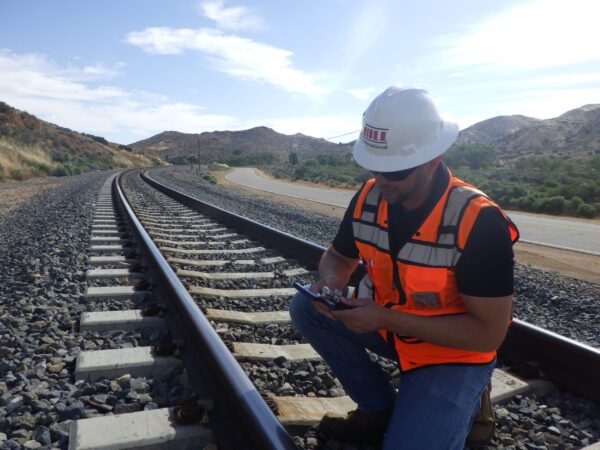
April 20, 2025 | Articles
Sustainable Scaling: Solutions for Managing Risk on Europe’s Data Center Projects

Owners often plan to deliver megaprojects following aggressive schedules. These aggressive schedules generally assume that, with proper planning and processes, projects will progress as planned like a well-oiled machine.
However, this is not regularly the case.
Based on my experience working on three rail megaprojects, as well as on cases documented in industry journals, I find that securing project permits to start construction is a common challenge. When project teams are unable to secure permits as planned, their well-oiled machine can quickly break down, causing long-term cost and schedule disruptions and resulting in pulled funding and diminished stakeholder confidence. These outcomes can threaten a project’s feasibility.
So, what can project owners, contractors, and consultants do to overcome this challenge, secure permitting, and keep their projects on track? Below are steps for reducing permitting risk.
Prior to awarding a contract, owners and their proposed consultants and contractors should compile a non-contractual draft list of permits that they expect to need for the project. They should also meet with relevant permitting agencies to discuss the project, common pitfalls in managing submittals, agency preferences (e.g., digital vs. paper submittals), usual review times, and options for expediting reviews when needed. By doing so, project partners will be able to schedule permitting activities more accurately and align their submittal processes with permitting agency preferences.

When onboarding team members, do not underestimate the value of local experience with permitting agencies. Such experience can help ensure smooth submittal processes in line with agency preferences while reducing the need for on-project learning to train staff on submittal processes. As a bonus, team members who have worked with permitting agencies may have established relationships with personnel at those agencies, opening additional doors for informally communicating questions or concerns during the project.
After contract award, cultivate a partnering culture through frequent team meetings and a variety of partnering tools such as partnering charters. Formal communications plans encourage informal one-to-one discussions within the project organization and create standard documentation practices for technical resolutions. Partnering sessions with reviewing agencies are especially important on infrastructure megaprojects, where the size of the project system and the number of variable inputs heighten risk and the potential for cost/budget slippage. A project team committed to partnering will resolve issues without pointing fingers, more flexibly mitigate setbacks, and collaborate with a focus on shared project success.
As the project progresses through design, each member of the project team should resolve to separate technical decision-making from contractual or commercial considerations. Statements such as “This isn’t in the contract” or “This will have cost and schedule implications” are important, but they cannot override the project’s engineering progress. Instead, all technical resolutions should revolve around applicable codes and standards and their relation to the project’s scope as applicable. The project partners can hold separate meetings to resolve contractual or commercial issues stemming from any technical resolution.
As code or standard-related comments come up during technical meetings, project teams should address these in due detail. A little extra time spent here can result in considerable time savings during review cycles. Additionally, the project team should agree on a framework to address any conflicting codes and standards.
When the time comes for permitting submittals, project partners should implement a quality assurance/quality control system with discipline leads. Based on their meetings with permitting agencies and the entire team’s feedback during technical meetings, contractors are encouraged to develop permitting checklists for every permitting agency. The team should also perform an interdisciplinary review of all packages prior to submittal and never issue a package without a thorough quality review. This will help build reviewing agencies’ confidence. Finally, if a submittal is rejected, the team must collaborate as true partners to agree on an expedited path forward by using clearly detailed “check-sets,” including explanations addressing permitting agency comments that are inconsistent with owner criteria.
By taking these steps, the project team will increase the likelihood of achieving their permitting schedule in accordance with project scope and keep their infrastructure megaproject moving like a well-oiled machine.

About the Author
Vice President Sami Soufi is an award-winning program executive with more than 30 years of experience leading the delivery of rail and transit megaprojects, including the $6 billion MTA Purple Line Rail Extension in Riverdale, MD, the $3 billion WMATA Silver Line Rail Extension in Washington, DC, and the $13 billion Riyadh Metro in Riyadh, Saudi Arabia. Sami holds a Master of Science in Construction Engineering and Management from the University of Maryland, College Park; a Master of Engineering in Structural Engineering from McGill University; and a Bachelor of Science in Civil Engineering from Middle East Technical University. He is a registered Professional Engineer in Maryland and Virginia. To speak with Sami about your own transit project needs, contact him via email at [email protected].
Share

April 20, 2025 | Articles
Sustainable Scaling: Solutions for Managing Risk on Europe’s Data Center Projects

March 12, 2025 | Articles
Get Stoked: Hill International Makes Big Waves in Spain’s Surfing Scene

March 9, 2025 | Articles
Project Manager TJ Pinales: Helping Along the Road in San Antonio

March 4, 2025 | Articles
Balancing the Equation: An Interview with Project Manager Tracy Wiyrick

March 1, 2025 | Articles
A Lifelong Project: Calypso Kyriakopoulou’s Multifaceted Career in Construction

February 10, 2025 | Articles
Dual Delivery: A Viable Strategy for Complex Transit Projects

January 23, 2025 | Articles
Plotting a Roadmap to Success on the Torres de Colón Renovation

December 12, 2024 | Articles
Progressive Design-Build for Rail and Transit Projects: Room to Run